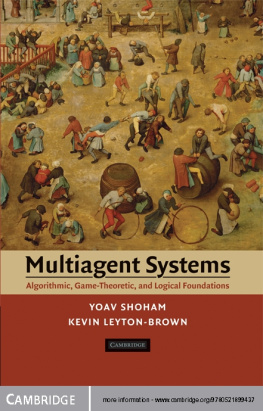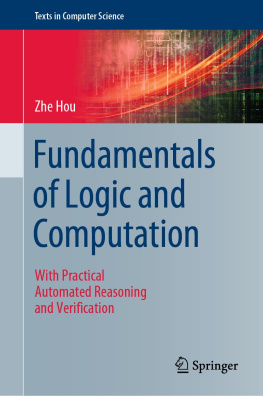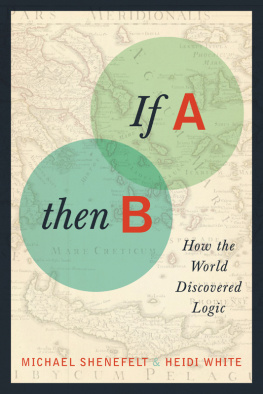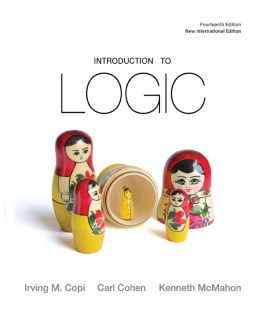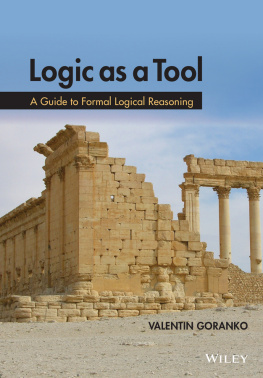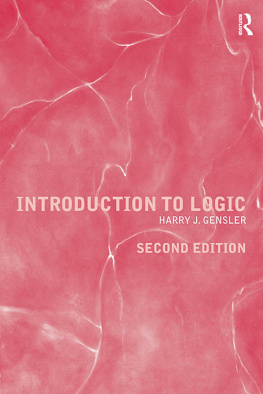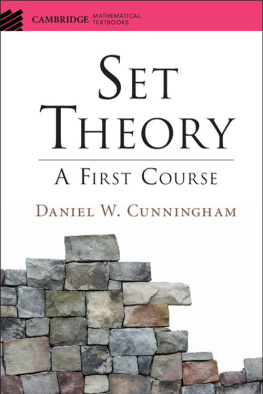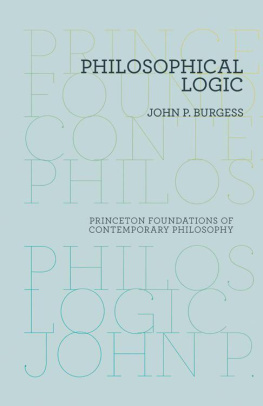Contents
Guide
Pagebreaks of the print version
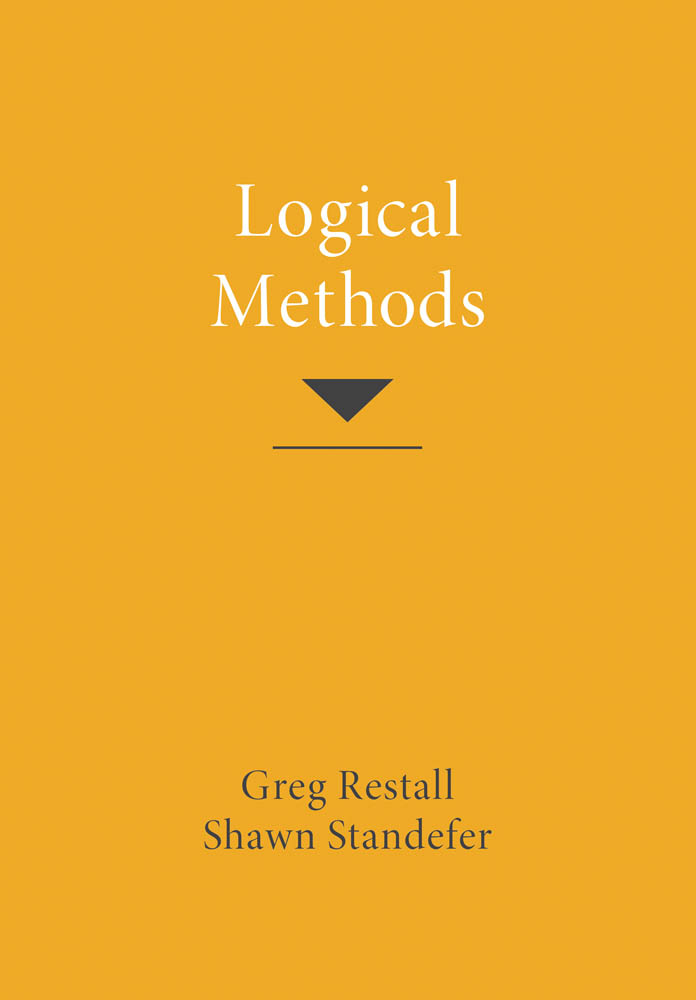
Logical Methods
Greg Restall and Shawn Standefer
The MIT Press
Cambridge, Massachusetts
London, England
2023 Massachusetts Institute of Technology
All rights reserved. No part of this book may be reproduced in any form by any electronic or mechanical means (including photocopying, recording, or information storage and retrieval) without permission in writing from the publisher.
Library of Congress Cataloging-in-Publication Data
Names: Restall, Greg, 1969- author. | Standefer, Shawn, author.
Title: Logical methods / Greg Restall and Shawn Standefer.
Description: Cambridge, Massachusetts: The MIT Press, [2023] | Includes bibliographical references and index.
Identifiers: LCCN 2022006372 (print) | LCCN 2022006373 (ebook) | ISBN 9780262544849 | ISBN 9780262372701 (epub) | ISBN 9780262372695 (pdf)
Subjects: LCSH: LogicTextbooks.
Classification: LCC BC71.R4735 2023 (print) | LCC BC71 (ebook) | DDC 511.3dc23/eng20220712
LC record available at https://lccn.loc.gov/2022006372
LC ebook record available at https://lccn.loc.gov/2022006373
d_r0
To all our students at the University of Melbourne
Contents
How to Read This Book
Welcome to Logical Methods, an introduction to logic for philosophy students and for anyone who would like to learn how to use tools and techniques from formal logic to analyze arguments, to understand logical relationships between claims, to build models, and to understand the broad sweep of how formal logic has developed in the twentieth century and into the twenty-first.
The Structure
There are many different ways to structure an introduction to logic. You have to make choices in how to introduce things: particularly, choices about what to emphasize, what to downplay, and what to leave out. For the curious, here are two guiding choices we have made in putting this book together. The first guiding choice was to put equal emphasis on the two major tools in modern formal logic, proofs and models. There are two significant traditions in modern formal logic, focused around these two different ways of analyzing and defining logical concepts. From the point of view of proofs, an argument is valid if you can construct a proof leading from the premises to the conclusion. An argument is invalid only if there is no such proof. From the point of view of models, an argument is invalid if there is some model according to which the premises are true and the conclusion is false. (We call such a model a counterexample to the argument.) An argument is valid only if it has no counterexample. It is one of the highlights of the twentieth-century development of formal logic to distinguish these two approaches and to show that (for certain ways of understanding proofs and certain ways of understanding models) these two ways of looking at validity come to the same judgment about validity. If there is a proof from some premises to a conclusion, then there is no counterexample rendering the premises true and the conclusion false. And conversely, if there is no counterexample, then there is some proof.
Many textbooks concentrate on models and treat proofs as secondary. Some textbooks concentrate on proofs, and models are an afterthought. If you have already done a course in logic, you may have already seen models described as giving a semantics of the concepts being modeled, since a model is interpreting our language, giving the meanings of terms, while proofs are described as syntax, having nothing to do with meaning. We think that this understanding is mistaken: if proofs and models can come to make the same judgments about validity, then proofs have as much to do with meaningwith semanticsas do models. So, we treat proofs and models with equal emphasis.
In the first part of the book, on Propositional Logic, we start by introducing proofs using the propositional connectives of conjunction, the conditional, disjunction, and negation, and we get familiar with how to construct these proofs and analyze their properties. Along the way, we explore the connections between proof rules for each different logical concept and the meanings of those concepts, and we show that there is a sense in which whenever we can construct a proof from premises to a conclusion in this vocabulary, we can convert it into a proof that is, in an important sense, analytic. Once we have these on hand, we introduce models for propositional logic, truth tables, and truth-value assignments. Then we look at the relationship between proofs and models and prove that (if we choose our proof rules and models appropriately), whenever we have a proof for an argument, we have no counterexample, and conversely, if we have no counterexample, there is some proof.
If you have done some logic before, you might think that the natural next step would be for us to introduce predicates, terms, and quantifiers and explore the language of first-order predicate logic. We dont do this. Our second guiding choice was to move from propositional logic to explore modal logic, the logic of possibility and necessity. We made this choice for two reasons. First, the modal concepts that we explore are of deep interest in their own right and arise naturally out of the considerations of the truth-table models we explore in the first part of the book. It is very natural to think of the different models of our propositional language as representing different possibilities, and so, we tackle the study of possibility and necessity head on, as a natural next step. Second, the logical tools we explore, both the proofs and the models, are less complex and intricate than proofs or models for first-order predicate logic. Moving from propositional logic, to modal logic, and only then, to first-order predicate logic, results in a smooth increase in levels of complexity, and each part builds on the tools developed in the previous parts.
So, in the second part of the book, devoted to Modal Logic, we use truth-table models as our launching pad, to define models for the concepts of necessity and possibility. So we introduce our concepts using models this time, unlike in part I, when we started with proofs. Only once we get to grips with these models, we then ask ourselves the question of how it is that we could prove things using modal concepts. So this part ends with a treatment of modal proof.
The third part of the book, devoted to quantifiers and Predicate Logic, then starts off where part II ended, looking at how the kinds of features distinctive to reasoning with necessity and possibility are shared with the kinds of reasoning we find when we try to prove things using the quantifiers all and some (the universal and existential quantifiers). So, we start the last part examining proofs for first-order predicate logic, with the quantifiers. Given those rules, it is natural to ask what models for languages with quantifiers look like, so we end on that note, defining and using models for first-order predicate logic.
Along the way, we will see many different examples of how to use these tools of proofs and models for propositional, modal, and predicate logic to construct and analyze arguments, to find their structure, to build counterexamples, and to gain a mastery of key concepts that are used again and again in philosophy and in any area where we take care to use proofs and counterexamples in clarifying our reasoning.


